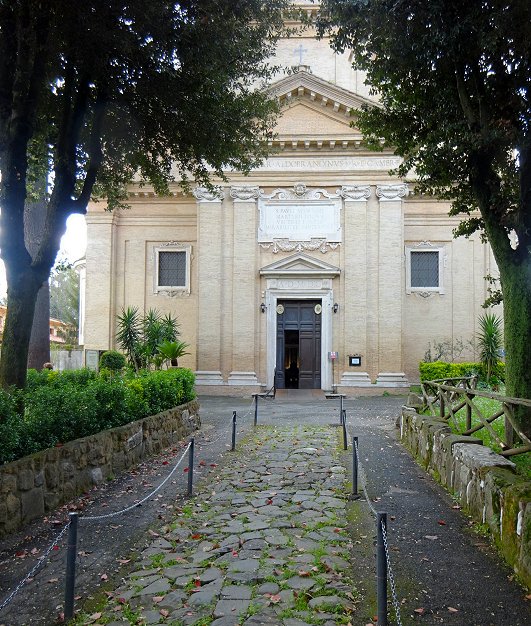
One does not usually think of recycling when ancient Rome comes to mind. Nevertheless, we have noticed in the research for our series of guidebooks to archeological sites in Rome how frequently new structures were built with re-used materials. This use of spolia is especially prominent in the fourth century AD when Emperor Constantine sponsored the construction of new Christian basilicas. Ancient columns from the imperial storehouses can been seen in the Basilica of Saint Laurence outside the Walls (Basilica di San Lorenzo fuori le Mura), as well as in the Lateran Baptistery (Battistero lateranense). On our recent trip to Rome, we discovered that the so-called spolia from Ostia has been re-used in Rome, as well.
This revelation occurred on an excursion to one of the sites in Rome related to the life of the Apostle Paul. Early one morning, we headed to the Abbey of Tre Fontane (Abbazia delle Tre Fontane), the traditional site of the martyrdom of St. Paul. Although it is in the city of Rome, the Abbey of Tre Fontane is a long way from the city center. To get there, one must take the Metro Line B to the Laurentina station, the end of the line to the south. From the station, the entrance to the abbey grounds is a short walk north on Via Laurentina for 1.5 kilometers -- it's only about a 20 minute walk. The Church of the Martyrdom of St. Paul (Chiesa del Martirio di San Paolo) is at the end of the long tree-lined lane that runs through the abbey complex.

Figure 1: Church of the Martyrdom of St. Paul
The church itself is quite small. The entry vestibule opens onto the nave that has two chapels on the sides and the main altar in the apse at the center. To our surprise, we saw that the floor in the center of the nave is decorated with a Roman mosaic that was originally in Ostia Antica in a room near the mithraeum of the Imperial Palace (Palazzo Imperiale). Dating from the second century AD, the mosaic depicts the personification of the four seasons that are identified by the embedded inscriptions: VER (spring), AESTAS (summer), AVTV[mnus] (autumn), HIEMS (winter) [see note 1, below].
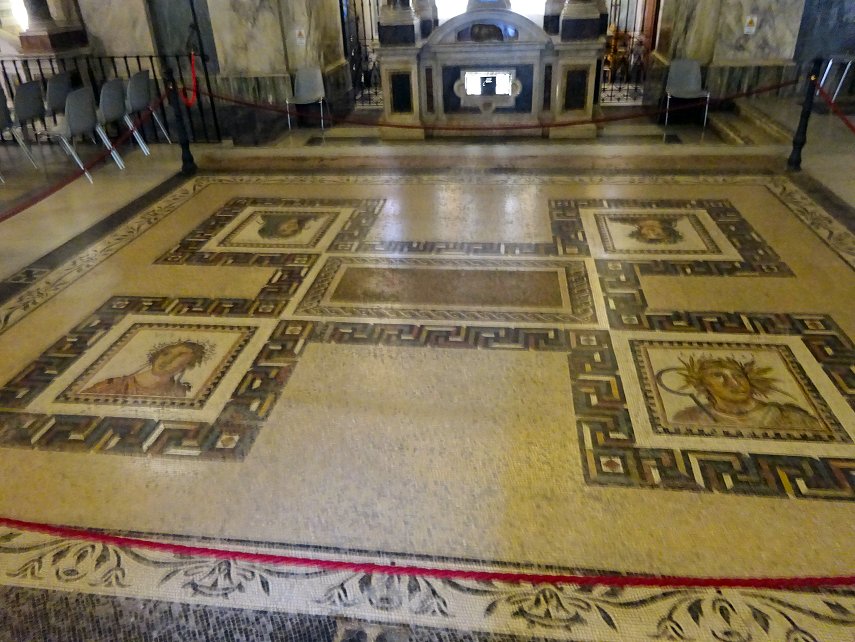
Figure 2: The Four Seasons mosaic from Ostia's Palazzo Imperiale
The Four Seasons mosaic was uncovered during excavations at Ostia that were initiated by Pope Pius IX in 1855 AD. The mosaic was subsequently donated to the Church of the Martyrdom of St. Paul by the pope [see note 2, below].
The mosaic of the Four Seasons is not the only work of art from Ostia that has been removed to other locations. The Altar of the Twins (Sacello dell'Ara dei Gemelli) that was adjacent to the Piazzale delle Corporazioni is now in the Palazzo Massimo in Rome [see note 3, below], and a number of other mosaics are now housed in the Vatican museums. It can be argued that the removal from Ostia has preserved these precious pieces, but in some ways, the art has become inaccessible.
In the case of the beautiful Four
Seasons mosaic, though, this treasure is in a place where it is preserved and
protected, yet it is still available for viewing. And, the price of admission
is only a short walk down a quiet and contemplative shady lane.
1. Complesso
delle Tre Fontane, http://www.abbaziatrefontane.it/complesso-delle-tre-fontane/#sanpaolo
2. Ostia.
Introduction, http://www.ostia-antica.org/intro.htm
Ostia. Regio I - Palazzo Imperiale,
http://www.ostia-antica.org/regio1/pi/pi.htm
3. Regio II - Insula VII - Sacello dell'Ara dei Gemelli (II,VII,3), http://www.ostia-antica.org/regio2/7/7-3.htm
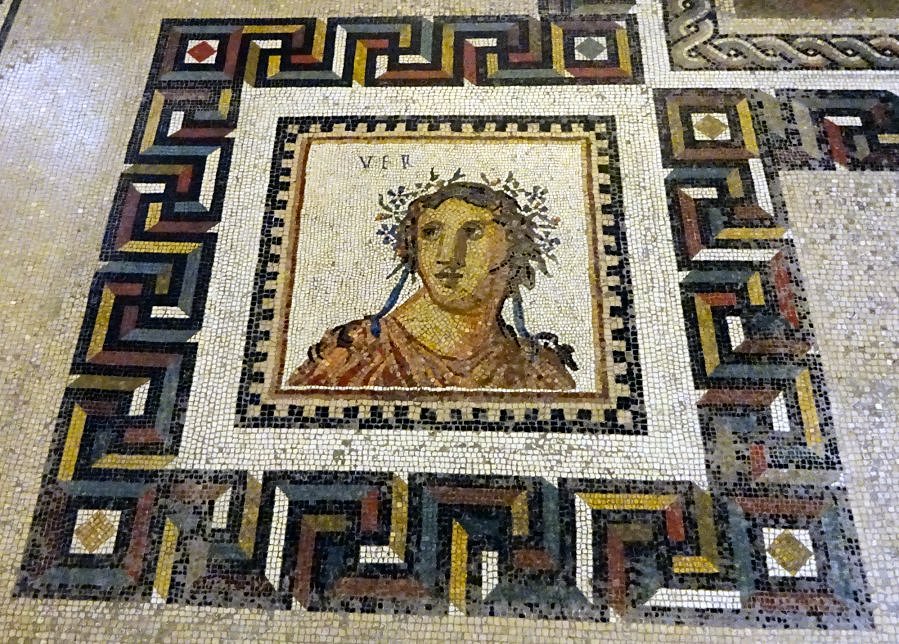
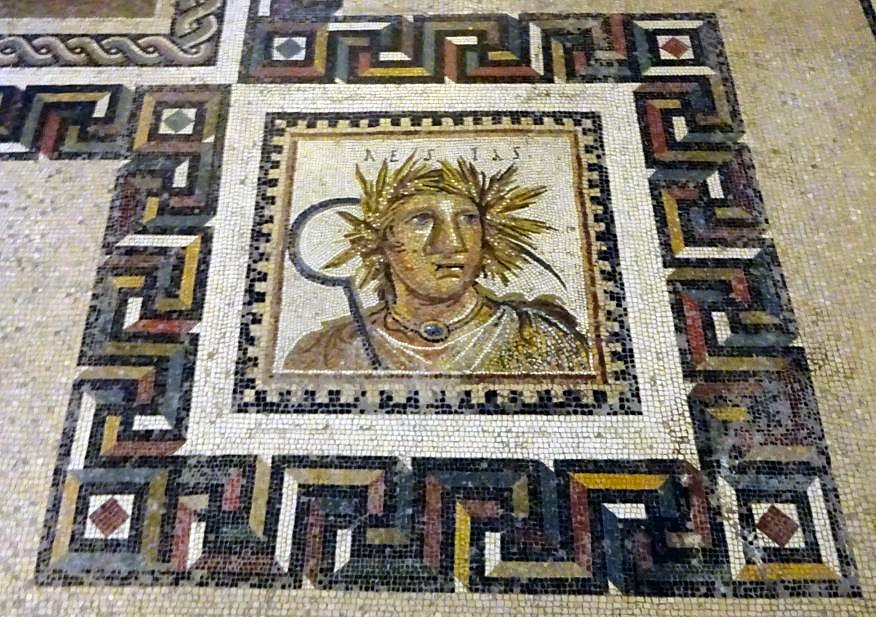
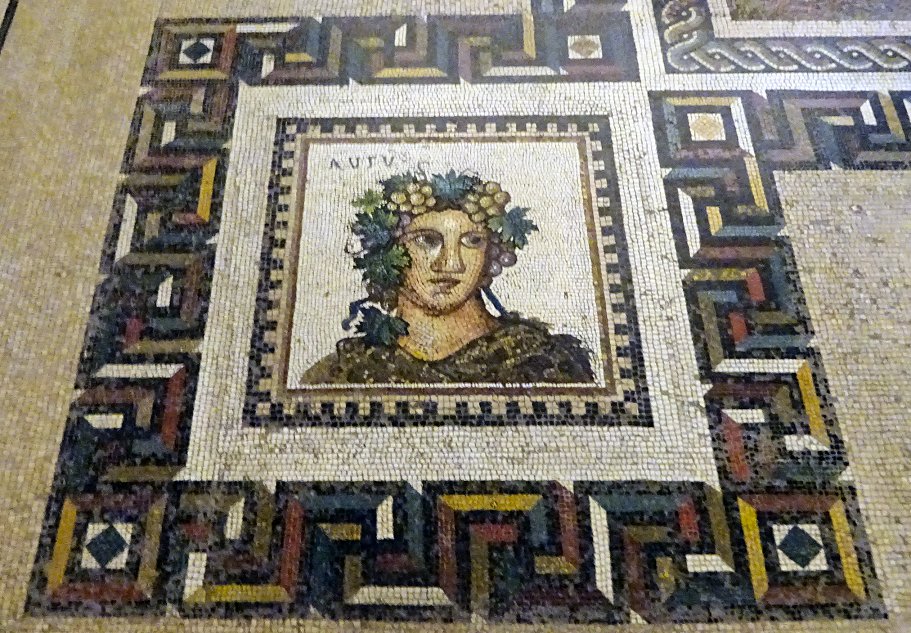
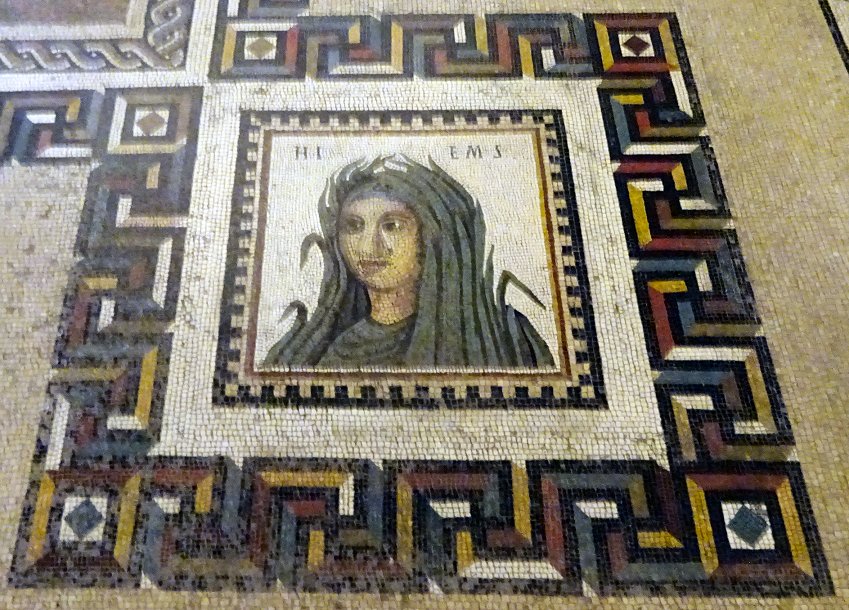
Figures 3-6: Detail images of the four seasons